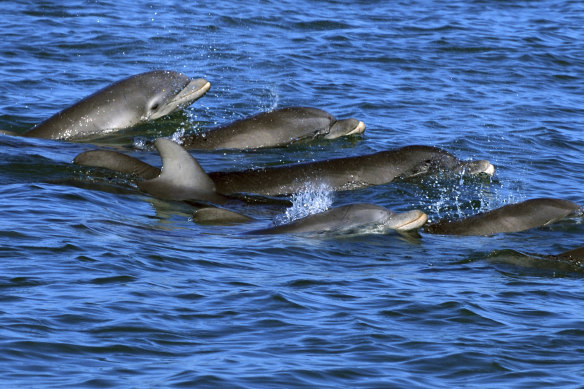‘Sexual violence’: NZ broadcaster chastised over dolphin mating scene
By Ben McKay
Wellington: New Zealand’s media watchdog has chided public broadcaster TVNZ for not giving a higher classification to a documentary with dramatised dolphin mating.
The nature series Our Big Blue Backyard drew the ire of one New Zealander who successfully complained to the Broadcasting Standards Authority (BSA).

The offending scene was in the nature series Our Big Blue Backyard.Credit: AP
In the offending scene, a female dolphin is targeted by a pack of male dolphins that mate with her.
“She’s trapped at the surface, and the males take turns. Once they’ve all mated with her, they leave her alone,” the narrator says, accompanied by underwater footage of the encounter and dramatic music.
The BSA said the footage included “the male dolphins swarming around the female with their genitalia visible, and at one point a male visibly entered the female ... accompanied by audio of dolphin cries”.
Viewer Chris Radford appealed to the BSA that TVNZ should not have aired the program at 7:30pm with a G, or general, classification.
‘While the behaviour may have been natural, it was still a kind of sexual violence inflicted upon the female dolphin.’
New Zealand television viewer Chris Radford
“While the behaviour may have been natural, it was still a kind of sexual violence inflicted upon the female dolphin,” he argued in his submission.
“The poor creature was trying to flee from the male dolphins.
“It is clear that this is a situation where further counselling will be required for young children regarding the behaviour observed.”
TVNZ argued it was factual, educational, was not unduly dramatised and should not be considered akin to human sexual violence.
“Such an assessment reflects a judgement predicated on human sensibilities which, as above, we do not consider are an appropriate framework for understanding animal behaviour,” their response said.
The BSA ruled in favour of Radford, finding the program should have been given a PG rating recommending parental guidance.
“The Authority found the scene went beyond audience expectations of the program’s ‘G’ rating as it featured mature themes, graphic images, and was dramatised in such a way that it may have been alarming or distressing for any children watching, and required adult supervision and guidance,” the ruling read.
The BSA cited research into children’s viewing habits which identified “animal harm or torture as one of the most common types of content that children found upsetting”.
AAP
Get a note directly from our foreign correspondents on what’s making headlines around the world. Sign up for the weekly What in the World newsletter here.